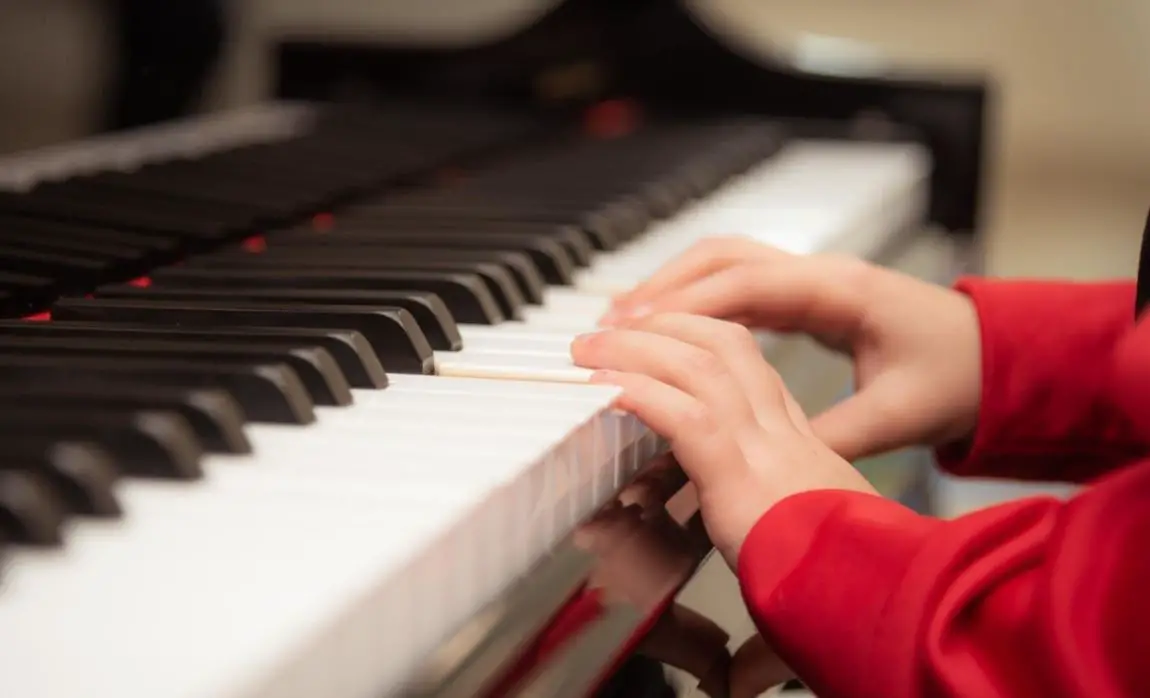Learning to play the piano can seem like a formidable task, especially if you’ve never learned to read music. Playing any instrument requires a kind of multitasking as you both read the music and “hear” it in your mind and mastering both while using the piano’s 88-note keyboard can feel impossible. Piano sheet music with letters supports your practice by reducing the effort required to read so that you can focus on multiple skills with notation set at a more accessible level.
What Is It?
The basic notation system for music includes a series of seven notes named ABCDEFG. Piano music uses the Grand Staff with two sets of five lines, separated by a space. The top set of lines, the treble clef, contains the higher notes, while the bottom set, the bass clef, contains the lower ones. Piano sheet music with letters uses larger notes labeled with the letter name in the note heads.
Most beginner piano sheet music with letters includes only five notes on the treble clef, from middle C to the first G. The bass clef in easy beginner music incorporates the notes from the B below middle C down to G. Musicians use a standard set of acronyms in English to associate the notes’ letter names with their locations on the full music staff.
Treble Clef Notes
The full treble clef, the set of five lines at the top of the staff, begins at middle C and progresses to high G. Higher notes use floating ledger lines to indicate the continuation of the pattern of lines and spaces. The mnemonic to remember the line names for each note are (from bottom to top:
- Every
- Good
- Boy
- Does
- Fine
The spaces on the treble clef, from bottom to top, work as a simple acronym:
- F
- A
- C
- E
Bass Clef Notes
Again, reading from the bottom of the bass clef to the top, you can memorize the following acronym for the lines:
- Good
- Boys
- Do
- Fine
- Always
You can remember the bass clef spaces with a similar mnemonic, with some options depending on your preference (or your sense of humor!):
- All
- Cows
- Eat
- Grass
Who Should Use Piano Sheet Music With Letters?
Some piano instructors choose not to directly instruct their students in these mnemonics, preferring to encourage attention to the patterns. Either way, piano sheet music with letters helps students internalize the names and placement of the notes on the staff while reducing the cognitive load associated with musical multitasking. In other words, beginning students can feel more confident about finding the right note while also attending to tempo and musicality.
Many piano instructors use piano sheet music with letters as a visual aid for direct instruction of the music notes and to bolster their students’ confidence and motivation for practicing. Very easy or beginner piano arrangements with lettered notes provide scaffolded that leads you gradually into reading more complicated arrangements. Labeled notes make learning your favorite tunes and practicing the various coincident skills required for playing the piano easier and more enjoyable.
